Stages of Twin to Twin Transfusion Syndrome
You may encounter several definitions of TTTS. Many of these concepts are based on the pediatric literature - in other words, they are based on the rare survivors of untreated TTTS. We now understand that babies reported this way have the mildest or shortest forms of TTTS. Earlier diagnosis and emphasis on prenatal assessment means that those old terms have limited value. This makes assessment of patients' risks and comparison of their results very difficult. In 1997, Dr. Ruben Quintero proposed a system based on ultrasound findings which made assessment much clearer. The use of this staging system has led to general agreement on the condition of the babies before treatment is started, making it possible for us to compare modern management options objectively. The severity of TTTS is graded by the characteristics of amniotic fluid volume, bladder filling and multiple features of cardiovascular function, in five stages.
Stage 1:
Polyhydramnios - vertical amniotic fluid pocket >8 cm in the recipient sac AND oligohydramnios - no vertical amniotic fluid pocket > 2 cm in the donor sac.
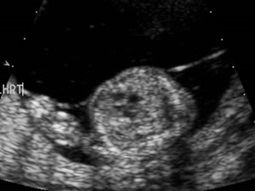
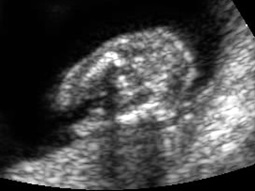
These images of the donor show reduction in amniotic fluid. On the left, the membrane is across the baby's chest, with small pockets of fluid below it. On the right, this baby has no amniotic fluid left and his legs are tightly pressed against his abdomen. The fluid in this picture belongs to his brother, the recipient, who has polyhydramnios.
Stage 2:
Absent bladder filling in the donor.
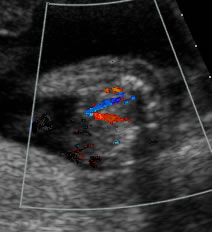
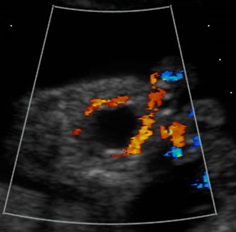
The donor on the left has no visible bladder (the colored lines represent umbilical arteries, one on each side of the bladder, which is empty). The recipient on the right has a continuously over-filled bladder (the black circle in between the two arteries).
Stage 3:
Critically abnormal cardiovascular function in either twin.
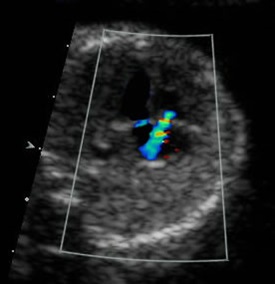
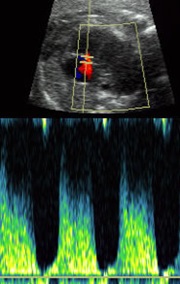
The recipient has excessive blood volume, which puts stress on the heart. These images show blood flowing backwards through the tricuspid valve due to borderline heart failure.
Stage 4:
Evidence of overt heart failure in either twin.
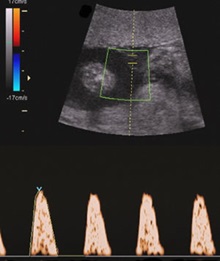
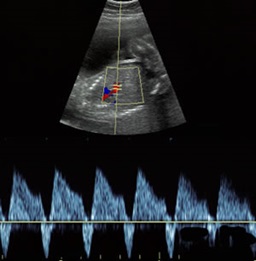
Each baby has circulatory problems as TTTS progresses. On the left, the donor has severe placental resistance and very low blood flow to the placenta. On the right, the recipient is struggling with heart failure, with blood running backward during the cardiac cycle.
Stage 5:
Intrauterine death of either twin.
In addition to these minimum assessments necessary to carry out the "Quintero staging", there are several other factors that help to individualize the risk assessment further.
Synonyms: TTTS, stuck twin, feto-fetal transfusion syndrome, interfetal transfusion syndrome, oligohydramnios polyhydramnios sequence, hydrops, acardiac twin.
These stages are not always followed by individual cases of TTTS. It is important that a comprehensive assessment, using high resolution ultrasound equipment and the best Doppler blood flow techniques, is performed. It is just as important that the team evaluating the assessment has the expertise and range of management experience to advise you about the individual characteristics of your specific situation.
